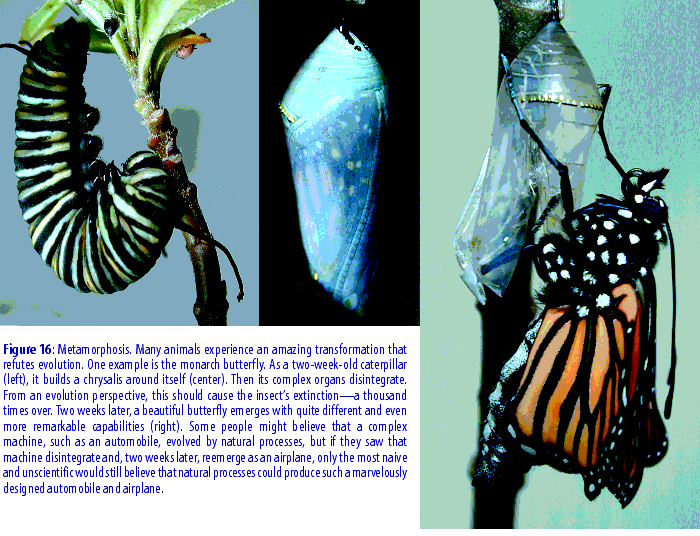34. Handedness: Left and Right
Genetic material (DNA and RNA) is composed of nucleotides. In living things, nucleotides are always “right-handed.” (They are called right-handed, because a beam of polarized light passing through them rotates like a right-handed screw.) Nucleotides rarely form outside life, but when they do, half are left-handed, and half are right-handed. If the first nucleotides formed by natural processes, they would have “mixed-handedness” and therefore could not evolve life’s genetic material. In fact, “mixed” genetic material cannot even copy itself.a
Each type of amino acid, when found in nonliving material or when synthesized in the laboratory, comes in two chemically equivalent forms. Half are right-handed, and half are left-handed—mirror images of each other. However, amino acids in life, including plants, animals, bacteria, molds, and even viruses, are almost all left-handed b—except in some diseased or aging tissue.c No known natural process can isolate either the left-handed or right-handed variety. The mathematical probability that chance processes could produce merely one tiny protein molecule with only left-handed amino acids is virtually zero.d
A similar observation can be made for a special class of organic compounds called sugars. In living systems, sugars are all right-handed. Based on our present understanding, natural processes produce an equal number of left-handed and right-handed sugars. Because sugars in living things are right-handed, random natural processes apparently did not produce life.

If any living thing took in (or ate) amino acids or sugars with the wrong handedness, the organism’s body could not process it. Such food would be useless, if not harmful. Because slight variations, that enhance survivability and reproduction, supposedly produce macroevolution, consider how beneficial a mutation might be that switched (or inverted) a plant’s handedness. “Inverted” (or wrong-handed) trees would proliferate rapidly, because they would no longer provide nourishment to bacteria, mold, or termites. “Inverted” forests would fill continents. Other “inverted” plants and animals would also benefit and would overwhelm the balance of nature. Why do we not see such species with right-handed amino acids and left-handed sugars? Similarly, why are there not more poisonous plants? Why don’t beneficial mutations enable most carriers to defeat their predators? Beneficial mutations are rarer than most evolutionists believe. [See “Mutations” on page 7.]